Science fiction has produced some of cinema's boldest and most glorious flights – in every sense. Sometimes patronised as kids' stuff, the genre seeks to look beyond the parochialism of most realist drama: to see other worlds and other existences, and therefore to look with a new, radically alienated eye at our own. Maybe something in the limitless possibilities of cinema itself spawned sci-fi.
George Meliès's A Trip to the Moon (1902) was one of early cinema's biggest hits. In the middle of the 20th century, sci-fi inhabited the B-picture world of monsters and rockets and intuited a "red scare" anxiety about aliens. At the end of the 60s, Stanley Kubrick's 2001: A Space Odyssey broke through into a new level of poetry and wonder. Films like Dark Star and Alien worked a satirical, pessimistic darkness into sci-fi, but George Lucas and Steven Spielberg together expressed its lighter, more hopeful strain.
In the 21st century, the Wachowskis' The Matrix sequels and Christopher Nolan's Inception have explored new, interior landscapes: the inner world of the mind may be the genre's new frontier.
10. The Matrix
The Matrix is a teenage boy's dream. There's action, fighting, cutting-edge special effects, murderous robots, evil authority figures, an overriding pseudo-conspiracy theory and, most wonderful of all, an ineloquent social outcast who eventually becomes a flying kung fu Jesus. What's missing? Girls in skin-tight PVC catsuits? Nope: The Matrix has those, too.
By cherrypicking as many key ingredients from action films as they could (the us-against-the-machines mentality from The Terminator, the wire work from Crouching Tiger, Hidden Dragon and the star from Johnny Mnemonic), and shooting it through with a timely dose of pre-millennial unease, the directors single-handedly managed to reinvigorate an entire genre. The sight of Arnold Schwarzenegger lunkheadedly charging through armies of ineffectual goons started to look embarrassingly tired. The Matrix marks the point where fans demanded more – they wanted to see themselves on screen. And that's why the casting of Keanu Reeves was a masterstroke. He might be pretty, but he's no one-man army. Plus: Neo is totally an anagram of "One". Woah. Stuart Heritage
9. The Terminator/Terminator 2: Judgment Day
A $7m outlay brought spectacular returns of over $70m for James Cameron's first great sci-fi action thriller, which spawned a three-sequel franchise, a powerhouse directorial career, and made robotic, former iron-pumping Teuton Arnold Schwarzenegger an unlikely 80s superstar. A time-travel thriller, whose closed-circuit-in-time mechanism is a straight lift from Chris Marker's La Jetée, its more cerebral notions – man versus machine, grey matter versus computer, past versus present versus future – are cleverly pondered alongside some of the most visceral and exciting action sequences ever filmed. And the monster, unstoppable and remorselessly murderous, can take on the voices of others, and later (in the sequel), even adopt their outward fleshly appearance, allowing it to take on the form of LAPD cops, step-moms, pet dogs, and who knows what else.
The follow-up, made for zillions more dollars, was a smash on a far larger scale, offering a metal-based morphing psycho robot (Robert Patrick) and a more sympathetic Schwarzenegger cyborg, this time assigned to protect, not destroy future rebel leader John Connor (Edward Furlong). One of the most likable aspects of this and several other Cameron features is his eagerness to put a tough, resourceful and sexy woman at the head of the cast – look at the muscle tone on that Sarah Connor in Judgment Day! – and never permit anyone to rescue her. State-of-the-art in their day, they still pack a knockout punch. John Patterson
8. Close Encounters of the Third Kind
Steven Spielberg revived and revitalised the alien-invasion genre after the 50s rush of raygun-wielding creature features. In his luminous 1977 special-effects extravaganza, he saw alien contact as a gateway to new knowledge, new experiences and a higher consciousness.
Its suburban hero Roy Neary (Richard Dreyfuss) is both an everyman and a prophet, a family guy who is haunted by sounds – the film's signature five-note whale call – and images of a rock formation in Wyoming, to the horror of his wife and their children. Spielberg flirts with thriller conventions, though this is ultimately a cosy ride, lightened by a spirit of evangelical zeal concerning Neary's obsession, while the encounter itself plays out like an intellectual version of the rapture, in which only true believers are taken by the sylph-like visitors.
The film is also as close as Spielberg gets to social comment, and the ending – expanded for the 1980 "special edition" – sees Neary, after an unpleasant grilling by the government and the military, turning his back on a US where Watergate and Vietnam were still recent and painful memories. Damon Wise
7. Star Wars
The original Star Wars (let's not bother with this Episode IV: A New Hope subheading nonsense) lays its cards on the table with its opening shot: a gigantic, evil-looking spaceship chasing down a far smaller craft. Like the rest of the movie, you could watch it with the sound off and completely follow what was going on. It's the purity of the story that has made this film endure, the classic themes handed down through the ages. It may be dressed up with robots, spaceships and trash compactors, but it's the old-as-time hero journey – George Lucas has said he consciously modelled his screenplay on Joseph Campbell's study of comparative mythology The Hero With a Thousand Faces.
In the cynical 70s, the notion of making a movie that mixed Kurosawa and Flash Gordon must have sounded as ludicrous as it does today. The film industry wasn't ready for such an ambitious technical feat (at such a modest budget) as Star Wars, so Lucas changed it by bringing in untested youngsters from experimental and indie movies, or from fields like industrial design. Lucas had a talent for mixing disparate influences and making them fit perfectly. He shepherded together acting stalwarts like Alec Guinness and Peter Cushing, experimental film-makers like Adam Beckett (who supervised the effects), and military uniform historian John Mollo; it would otherwise be inconceivable that these people would have all worked on the same project.
Much has been made of Lucas's repeated direction to his cast ("Faster and more intense") or that the dialogue was easier to type than say. Guinness, Cushing and James Earl Jones give it all the gravitas it needs, with the younger members fitting their roles perfectly: Mark Hamill's wide-eyed earnestness, Carrie Fisher's dignity and, perhaps best of all, Harrison Ford looking so mortified and embarrassed to be there. For audiences it resulted in a film unlike any before or since. Phelim O'Neill
6. ET: The Extra-Terrestrial
After 1977's Close Encounters (see no 8), director Steven Spielberg reversed the alien encounter formula to wonder not what we would make of them but what they would make of us. The result was this 1982 blockbuster, which eclipsed even the original Star Wars and received nine Oscar nominations (winning four) – a feat unheard of for a film with such overt sci-fi content.
Despite its genre trappings, ET balanced its fantasy content with an Academy-pleasing dose of sentiment, played out in the home life of Elliott (Henry Thomas), a lonely 10-year-old whose parents are separating. Little time is spent revealing where the film's ET has come from, or how he came to be left behind. Instead, Spielberg focuses on the film's unlikely-buddy story; the middle child of three (Drew Barrymore is the sweet but clingy younger sister, Robert MacNaughton the cynical teenage big brother), Elliott takes in the ET as the friend and confidant he doesn't have.
Largely filmed from an adult-waist-height perspective, the film prioritises this world of children and indulges them in their harmless naivety. So when the mean-minded authorities find out about the presence of ET, the effects are doubly shocking. The faceless hordes of uniformed, flashlight-toting militia make an intimidating and brutal sight. After a light-hearted first half, the film takes a plunge into darker drama in the second, when ET is captured and quarantined. Pale and half‑dead, the creature draws uncanny performances from its child cast, and the religious parallels in ET's subsequent "resurrection" have never gone unnoticed. However, they are likely accidental; Spielberg has said he sees his film more as a "minority story" about two outsiders who join forces in isolation.
There is also more than a hint of fairytale about ET, notably in the film's final, famous chase sequence, in which Elliott takes to his bicycle with ET on the handlebars and soars, Peter Pan-like, up into the sky. As in Close Encounters, there is a healthy scepticism about authority on show, but ET: The Extra Terrestrial is a less worldly film. Like much of Spielberg's work, it was heavily influenced by his parents' divorce and based on an imaginary friend he created at the same age as Elliott. "A friend," he said, "who could be the brother I never had, and a father that I didn't feel I had any more." DW
5. Solaris
Andrei Tarkovsky started work on an adaptation of Stanisław Lem's philosophical science-fiction novel in 1968 in an attempt to find a popular cinematic subject. After the usual labyrinthine negotations with the Soviet authorities over the script, what emerged was a space film unlike anything before or since. Lem's novel posited the existence of solaristics; the study of an outlying star system that had bizarre effects on human psychology. Tarkovsky took this idea, and turned it into a dreamlike interrogation of faith, memory and the transfiguring power of love.
Tarkovsky begins his version of the story with some of the most magically earthbound images ever filmed, as his protagonist, a psychologist called Kelvin (Donatas Banionis), contemplates his garden. He then embarks on a voyage to the space station circling Solaris, there to investigate the reports of eccentric behaviour of previous visitors. Kelvin undergoes an ordeal by memory, as Solaris' psychoactive properties trigger the reappearance of his dead wife, Hari (Natalya Bondarchuk). The space station becomes a place of mysterious hauntings and apparitions. His colleagues hardly inspire trust, and Kelvin attempts to make sense of what is happening to him as he retreats further into an internal world.
Tarkovsky was barely interested in Lem's main preoccupation: to theorise about what might constitute alien life. Solaris, and its apparently animate "oceans", are simply a conduit to, and externalisation of, deeper spiritual matters. It's fair to say that no other director can have got anywhere near the mystic uplift of this film - and that includes the Steven Soderbergh remake with George Clooney. Lem didn't like the way his novel had been adapted; Tarkovsky himself considered it a less than successful film. But the clarity and beauty of Solaris ensures its majesty lives on. Andrew Pulver
4. Alien
Alien is a perfect storm of talents: Dan O'Bannon and Ronald Shusett's lean screenplay; Derek Vanlint's moody cinematography; Jerry Goldsmith's haunting score; Brian Johnson's miniature effects, and a cast including Sigourney Weaver, Harry Dean Stanton, Ian Holm and John Hurt.
The most noticeable and revolutionary work on this film was, of course, on the design side. O'Bannon had previously worked on Alejandro Jodorowsky's ill-fated adaptation of Dune (a project that also fell through Ridley Scott's grasp). For that he had assembled an incredible assortment of artists, who he regrouped for Alien, with talents such as Moebius from the Métal Hurlant magazine, Ron Cobb from Star Wars and Swiss artist HR Giger. Years before, Giger had a vivid nightmare where a lavatory and surrounding plumbing came to queasy, pulsating life – and so his "biomechanical" style was born. His creations were bizarre, organic machines and his designs for Alien, such as the huge derelict spaceship the astronauts investigate, seem as much grown as constructed.
Alien uses a similar story framework to the 50s cheapo monster flick It! The Terror from Beyond Space, but adds so much to it that it becomes a far deeper film. There are plenty of subtexts at play here, such as having the lead role played by a woman (the script just used surnames in a non-gender specific manner), or the male Kane giving "birth" to the creature in the still-powerful "chestburster" scene. However you approach it, this is a wonderfully immersive and terrifying film. It was such a shock to the system when it was released (and a huge hit to boot) that you can still see its influence in countless sci-fi and horror films decades down the line. PON
3. Blade Runner
Most directors who have finished a science-fiction film tend to choose something a little more down to earth for their next project. Ridley Scott, coming off Alien, launched himself into something even more stylised and visually dense.
Based on Philip K Dick's novel, Do Androids Dream of Electric Sheep? and borrowing the title from William S Burroughs, Blade Runner follows a detective called Rick Deckard (Harrison Ford) as he hunts down a group of replicants. These synthetic humans – almost impossible to discern from the real thing – have escaped from one of the "off-world" colonies and returned to Earth. Deckard's mission is to "retire" them, but the reason behind the replicants' return is interestingly emotive: they wish to lead their own lives, as is the right of any sentient being.
Blade Runner, notoriously, was completely misunderstood when it was released. Ford was an action man and audiences could be forgiven for thinking this was going to be a sort of Indiana Jones and the Flying Police Car. It wasn't helped by the clumsy voiceover and coda that the studio insisted upon.
Now, though, there's no denying its classic status. There are several versions available, each showing that with even a few minor differences, this film can be read in different ways. (Is Deckard a replicant? Even Scott and Ford can't agree.) Designer Syd Mead also pulled his weight. Mead was a visual futurist, a designer of advanced concepts for companies like Chrysler and Philips. However, it is Rutger Hauer's final speech, as the dying replicant leader Roy Batty, that people remember the most. It's an emotional end, adding unexpected heartbreak to a film that may have seemed almost baffling at first viewing. PON
2. Metropolis
Although many sci-fi films followed, none have had the lasting, seemingly self-regenerating appeal of Fritz Lang's silent classic – perhaps because, after its Berlin premiere in 1927, it is arguable that no authoritative version of it has ever really been established. Originally clocking in at two hours and 33 minutes, Metropolis has since become a movable feast, with new scenes and scores – Giorgio Moroder issued a derided, colour-tinted synth version in 1984 – that have kept Lang's epic current.
For its time, the film was a milestone, innovative miniatures and camera tricks to create its city of the future, taking two years to shoot and bankrupting its producers (in modern money, the budget was close to $200m). But the real key to its longevity is its thematic content: more a warning than a romance, it deals with issues of modernity that have never gone away. Class conflict is its main thread: when Freder (Gustav Fröhlich), the idle son of a rich businessman, discovers the primitive conditions the city's workers are living in, the scenes of a dehumanised proletariat – a cast of more than 30,000 extras – still have power today. Lang's fetishising of machinery scarily foregrounds the cost of heavy industrialisation. But what many remember most is an extraordinary sequence in which the woman who pulls the scales from Freder's eyes – Maria (Brigitte Helm), a good-hearted workers' rights agitator – is kidnapped and replaced with a sinister, violence-inciting robot double by evil scientist Rotwang, at Freder's father's command. This hydraulic beauty, with cantilevered breasts, morphs into a wide-eyed, unblinking Maria in a moment of pure magic.
Many of Lang and writer Thea von Harbou's original subplots have been lost. But even in its shortest form (90 minutes) Metropolis remains a timeless tale. Though made to fit a genre that showcases the possibilities of the future, Lang's film never loses sight of its rights and wrongs. DW
1. 2001: A Space Odyssey
When 2001: A Space Odyssey was first released, few would have predicted it would still be feted nearly half a century later. In fact few would have tipped it for even short-lived glory. At its premiere – its premiere – there were 241 walkouts, including Rock Hudson, who asked: "Will someone tell me what the hell this is about?"
Even its champions were stumped. "Somewhere between hypnotic and immensely boring," thought the New York Times; "Superb photography major asset to confusing, long-unfolding plot," reckoned Newsday. But bafflement was the intention, explained its creators. Said Arthur C Clarke, whose 1948 story The Sentinel was the starting point for Stanley Kubrick (Clarke's novelisation postdated the film): "If you understand 2001 completely, we failed. We wanted to raise far more questions than we answered."
A cop-out? Far from it: 2001 is magisterial. Its impeccable serious-mindedness is nothing to scoff at; what some saw as ponderous now seems merely prescient. It was both the last space-travel movie shot before men actually landed on the moon, and the first to turn a genre that had been the preserve of B-movie cheese into the highest form of art.
It looks not just as fresh as the day it was made but as fresh as the day you first saw it: iffy ape costumes aside, it's one of the few 60s movies that stands up to contemporary technical scrutiny. At the time, it must have marked a quantum leap forward: suddenly, space seemed credible. To watch even now is to be awestruck: all those exacting details (the 700-word instructions for using a zero-gravity toilet), the pacing – at once lulling and urgent, the audio – soaring Strauss waltzes spliced with dead air. In space, of course, no one can hear you speak.
And so to the difficult matter of what on earth it's about. On a bare-bones level, it concerns three artefacts: one left on Earth at the dawn of man by space explorers keen to steer the evolution of the apes, another buried deep in the lunar surface, and programmed to signal word of man's first journey into the universe (in Kubrick's words, "a kind of cosmic burglar alarm") and the third in orbit around Jupiter – another alarm, this time for when man breaks out of his own solar system.
And that's what happens in the film, when a team of five men (three in hibernation) jet off to investigate the second. But the mission goes awry – arguably the fault of the chatty command computer, Hal – and the sole surviving astronaut is swept into a force field that hurls him on a journey through the galaxy. From there it's to a human zoo, built from his own subconscious, where he ages fast, dies, is reborn and enhanced – "a star child, an angel, a superman" (said Kubrick) – before returning to Earth to advance evolution.
2001 is a film whose ambition is only matched by its achievement in pulling it off. It was the world's first – and perhaps only – metaphysical exploration of the workings of humanity, from the beginning of time to the far-flung future, and it's small wonder sci-fi has never really recovered. It has really only been going backwards, relying either on splashy effects or psychological conundrums handled so tritely that they barely seem related to 2001 at all.
Some complain that it is chilly, inhuman. Perhaps. But the dying song of Hal, warbling out Daisy Bell (A Bicycle Made for Two) as his plug is pulled, must be one of the most haunting scenes in cinema, mechanic or not.
Not to mention, of course, that 2001 provides the most open-and-shut case for cinema being primarily a visual medium: from the twirling, dancing orbits to the extended acid(ic) trip at the end, it is, quite simply, a knock-out. And it features Leonard Rossiter as a Russian astronaut. The question back in 1968 would have been: how could this possibly be number 1? The question today is: how could it not? Catherine Shoard
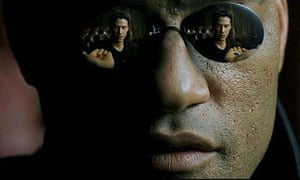
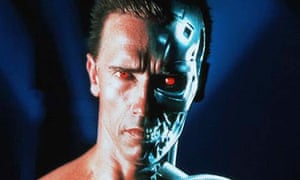

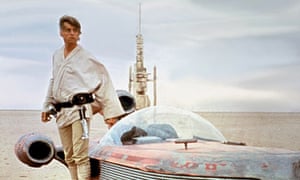
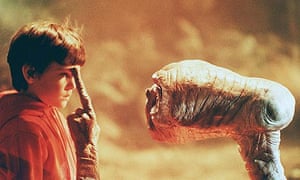




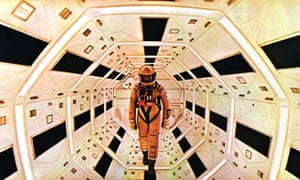


![CAPCUT PRO + MOD APK (V8.3.0) DOWNLOAD [NO WATERMARK/UNLOCKED ALL 2023]](https://blogger.googleusercontent.com/img/b/R29vZ2xl/AVvXsEjMEV_CBWErJpzwhwT1XyTy7NMmWO-ZK8VMTNPe92eXH2tf-H50TQdPvQmosK-y6np5qqIbrT6PMCa1FJ4chmsEPpbb3TwIj5evBtkdilhJZbCjMuuymdERiZPmJiUp5F4qce83vP6zSTY/w100/capcut-logo.webp)

